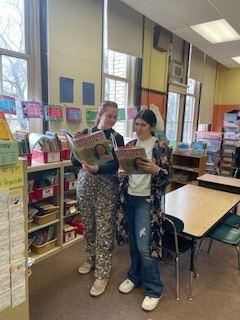Chicago Public Schools Lead the Way in Progressive Bilingual Education
Chicago Public Schools (CPS) are at the forefront of advancing bilingual education across the United States, demonstrating pioneering methods that significantly improve learning experiences for multilingual students. In partnership with Illinois State University (ISU), educators and administrators have unveiled effective techniques that dismantle language obstacles and foster academic achievement. This collaboration highlights CPS’s dedication to cultivating linguistic diversity and inclusive classrooms, offering a valuable blueprint for districts nationwide striving to elevate bilingual education outcomes.
Innovative Classroom Practices Transforming Bilingual Learning
Within CPS, teachers are implementing dynamic bilingual education frameworks that integrate cultural awareness with modern instructional methods tailored to diverse student populations. These approaches emphasize immersive language experiences, enabling learners to develop proficiency in both English and their heritage languages simultaneously.Among the standout techniques are collaborative narrative exercises, engaging language-based games, and technology-driven lessons designed to build confidence and fluency. Additionally, peer mentoring programs foster supportive environments where bilingualism is recognized as a critical asset for success in a globalized society.
- Balanced dual-language immersion: Students divide instructional time equally between English and a second language, enhancing cognitive flexibility and bilingual competence.
- Culturally responsive teaching: Curricula are thoughtfully designed to reflect students’ cultural identities, reinforcing self-esteem and belonging.
- Ongoing formative assessments: Personalized feedback mechanisms guide instruction aligned with each learner’s language development stage.
| Method | Classroom Effect | Student Advantage |
|---|---|---|
| Technology-Enhanced Instruction | Interactive digital tools support vocabulary acquisition | Boosted engagement and learner independence |
| Peer Mentorship | Collaborative learning atmosphere | Strengthened conversational skills |
| Storytelling Workshops | Stimulates creative expression | Deepened cultural connection |
Synergistic Partnership Between CPS and Illinois State University
The alliance between Chicago Public Schools and Illinois State University exemplifies a progressive model that enriches bilingual education through shared knowledge and resource pooling. This partnership emphasizes continuous professional growth for educators, equipping them with evidence-based strategies tailored to the linguistic and cultural diversity of their classrooms. Through collaborative curriculum development and specialized training sessions, teachers gain practical expertise that enhances both language acquisition and academic performance.
Highlights of this collaboration include:
- Refined instructional techniques incorporating dual-language immersion and culturally sustaining pedagogy
- Development of mentorship networks linking veteran bilingual educators with ISU teacher candidates
- Utilization of data-driven assessments to refine teaching practices continuously
| Focus Area | Effect | Outcome |
|---|---|---|
| Professional Development | Consistent, targeted educator training | 30% increase in teacher effectiveness |
| Curriculum Innovation | Jointly designed bilingual lesson plans | 25% improvement in student language proficiency |
| Mentorship Initiatives | Peer support systems for teachers | Greater classroom engagement and retention |
Empowering Educators and Engaging Communities for Bilingual Success
Specialized teacher training remains fundamental to the success of bilingual programs. CPS and ISU have crafted complete professional development workshops that prepare educators to deliver effective biliteracy instruction. These sessions focus on cultural competence, language acquisition theories, and differentiated teaching methods, ensuring educators are well-equipped to support English Language Learners (ELLs). Early findings reveal that ongoing coaching and practical application significantly enhance teacher confidence and student participation.
Equally crucial is community involvement in reinforcing bilingual education goals. CPS and ISU have established partnerships with families and local organizations to create supportive environments that celebrate linguistic diversity beyond the classroom walls. Initiatives such as bilingual family engagement nights,cultural celebrations,and parent leadership programs amplify family voices in shaping and sustaining bilingual education efforts. This collaborative model not only boosts student achievement but also strengthens trust and connection between schools and their communities.
| Component | Advantages | Key Activities |
|---|---|---|
| Teacher Training | Enhanced instructional skills and cultural awareness | Workshops, peer coaching, assessment strategies |
| Community Engagement | Stronger partnerships and enriched learning environments | Family events, cultural festivals, parent advocacy |
- Research-based methods customized for bilingual classrooms.
- Continuous communication between educators and community stakeholders.
- Collaboratively developed resources that address diverse learner needs.
Leveraging Data to Refine Bilingual Education and Shape Policy
Chicago Public Schools employ a data-informed framework to guide bilingual education implementation and district-wide planning. By systematically monitoring student language development, engagement levels, and academic results, educators can tailor interventions that maximize learning success.Recent analyses reveal that students enrolled in dual-language immersion programs not only achieve higher language proficiency but also demonstrate improved performance in core subjects like mathematics and reading, underscoring the comprehensive benefits of bilingual instruction.
Data-driven practices currently influencing CPS bilingual education include:
- Ongoing assessments: Employing both formative and summative evaluations to track progress and adapt teaching strategies promptly.
- Professional learning: Continuous educator training informed by the latest research in bilingual pedagogy.
- Community input: Incorporating feedback from families and students to enhance curriculum relevance and accessibility.
| Performance Metric | CPS Dual Language Program | Illinois State Average |
|---|---|---|
| English Language Proficiency Growth | 78% | 62% |
| Mathematics Achievement | 74% | 67% |
| Student Engagement Rate | 85% | 73% |
This evidence-based approach not only validates current bilingual education practices but also informs state-level policy decisions, guiding resource distribution and program scaling. Illinois is emerging as a leader in adopting data-supported frameworks that champion linguistic diversity while ensuring equitable educational opportunities for all students.
Conclusion: Sustaining Momentum in Bilingual Education
As Chicago Public Schools continue to expand and enhance their bilingual education initiatives, the insights from the CPS-ISU partnership emphasize the importance of research-backed strategies in driving academic excellence and cultural inclusivity. The collaboration serves as a model for districts nationwide, illustrating how innovative teaching methods and active community participation can transform bilingual learning.Looking ahead, ongoing dedication and rigorous research will be vital to ensuring bilingual education not only addresses the needs of diverse learners but also empowers them to succeed in an increasingly interconnected world.





